April 19, 2025 | 06:20 GMT +7
April 19, 2025 | 06:20 GMT +7
Hotline: 0913.378.918
April 19, 2025 | 06:20 GMT +7
Hotline: 0913.378.918
In September 2022, the first batch of Vietnamese durians was officially exported to China, enriching the diversity of Vietnamese fruits in the Chinese market. However, how to meet China's import requirements and clear customs without any problem is always a question for many farmers and exporters in Vietnam. To solve this problem, we interviewed the Customs officer in charge of Friendship Pass, Pingxiang, Guangxi, China, on some recommendations when exporting and cross-border transporting agro-products.
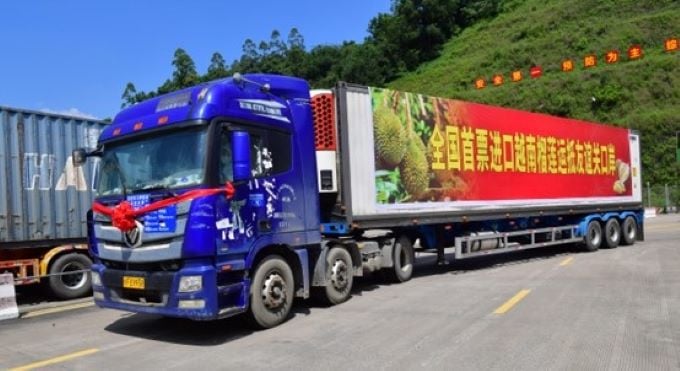
China has always been a potential market for Vietnam's fresh fruits.
Deputy Manager at Customs Supervision Management Board of Friendship Border Gate Dang Guangping stated that China had strict standards on food safety and hygiene and had issued many national standards on food safety and hygiene. Before exporting to China, agro-product exporters from Vietnam could refer to relevant standards on the Chinese agro-product standard public service website at: https://www.sdtdata.com/fx/fmoa/tsLibList/Q22
Mentioning standards, there requires testing for pesticide residues in fruits in Vietnam to ensure that exported agro-products conform to Chinese standards. Products that meet the standards must also apply for a "Sanitary and Phytosanitary Certificate for entry to China" with the General Department of Vietnam Customs before exporting to China.

There requires testing for pesticide residues in fruits in Vietnam to ensure that exported agro-products conform to Chinese standards.
According to Mr. Dang Guangping, with the premise of ensuring food safety and hygiene, export businesses need to pay attention to the requirements for product label identification and customs declaration. Taking Vietnamese durian exporters as an example, businesses must base on the request "Notice of phytosanitary requirements for imported Vietnamese durian" of China Customs. Each package must write information such as fruit type, exporting country, place of production/orchard or declaration number, packing factory or registration number, etc. The packages must be clearly written in English or Chinese, and must also be written with the words “Exported to the People's Republic of China”, shipped in a container, and possess a quarantine and inspection identification sticker.
Mr. Dang Guangping said, “After being accepted to export, businesses must choose Vietnamese fruit orchards registered with the China Customs. The selected fruits must be washed and packed, using clean and hygienic packaging materials. Effective measures such as cleaning or high-pressure air guns must be utilized to clean the fruit skins and remove harmful organisms. Enterprises also have to prepare declaration documents such as phytosanitary papers, certificates of production places, as well as commercial contracts and invoices issued by Vietnam’s plant quarantine agency. the goods can be declared for export after being transported to the border gates.”
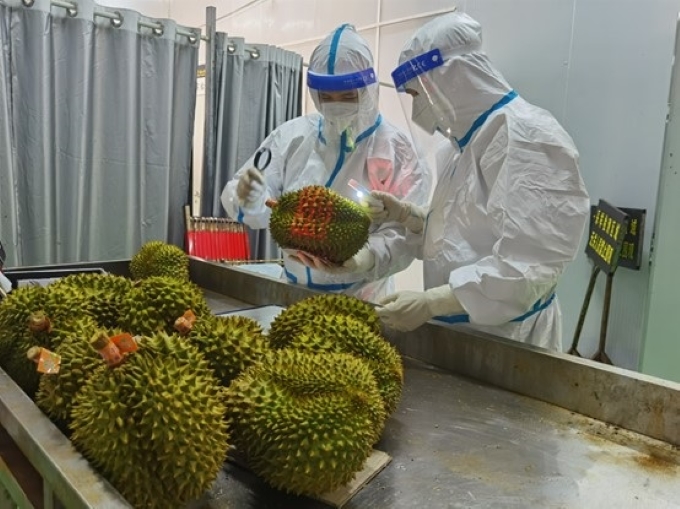
Thanks to the establishment of a service gate to prioritize declaration, testing, clearance, officers at the border gate could quicken the procedure for imported fruits.
Because agro-products such as durian are perishable fresh goods, there are high requirements for transportation, storage and clearance time. Deputy Head of General Department of Customs at Friendship Border Gate, Mr. Li Zhengluan, said that Friendship Customs had a "green channel" to import fresh agro-products. Thanks to the establishment of a service gate to prioritize declaration, testing, clearance, officers at the border gate could quicken the procedure for imported fruits. At the same time, Friendship Border Gate provided a 24-hour pre-clearance appointment service to shorten the time for clearance for fruit imports, putting great efforts to ensure the freshness of imported fruits.
Mr. Li Zhengluan also wished to give businesses a reminder: During the Covid-19 pandemic, Friendship Border Gate implemented a contactless freight transport model. He suggested that import-export businesses of China and Vietnam must strengthen communication, use the "two-step declaration", declare in advance, prepare early, increase the number of transport vehicles and exchange details with substitute drivers, improve the efficiency of driver change, and reduce the customs clearance time of goods waiting at the border gate.
At the end of July, the General Administration of Customs of China announced the regulations and phytosanitary requirements for Vietnamese fresh durian exported to China. After the regulations were issued, the Plant Protection Department (Ministry of Agriculture and Rural Development) coordinated with the Departments of Agriculture and Rural Development of the Central region and Central Highlands provinces to organize training and disseminate legal documents related to export requirements.
This period was also around the time durians in Dak Lak were about to enter the harvest stage. In order to promptly bring the first shipments of durians into China, Dak Lak People's Committee had decided to assign the provincial Department of Agriculture and Rural Development to act as the focal point to coordinate with units under the Ministry of Agriculture and Rural Development, related organizations and individuals to review and compare the conditions of the growing areas and durian packing facilities to fully meet the conditions and standards for export.
Translated by Ha Giang
/2025/04/18/0614-0-nongnghiep-120604.jpg)
(VAN) Cashew nuts are not only a nutritious food but also a golden raw material in both cuisine and export, contributing to elevating Vietnamese agricultural products onto the global stage.

(VAN) Orders from wood processing businesses in Bac Kan Province for export to the U.S. have been cancelled or suspended, even all orders cancelled in some cases.
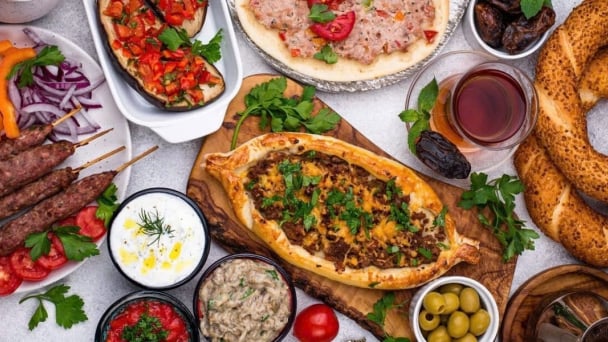
(VAN) Vietnam is regarded as one of the gateways to enter the Halal market in the Asia-Pacific region, which has the world’s largest Muslim population.

(VAN) With an annual production scale of around 5 million tons, Vietnam has enough potential to transform rice bran into a key export commodity if combined with deep processing.
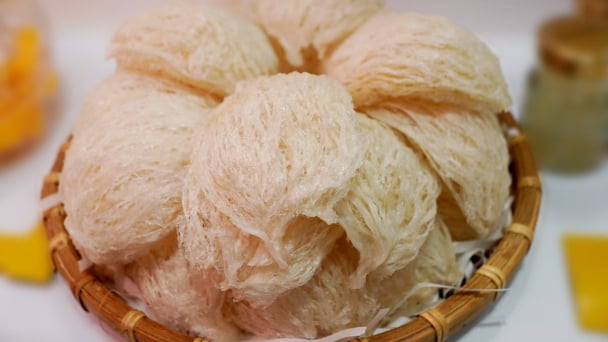
(VAN) As the world’s largest consumer of bird’s nest products, China is gradually becoming a 'golden' market for Vietnamese bird’s nests.
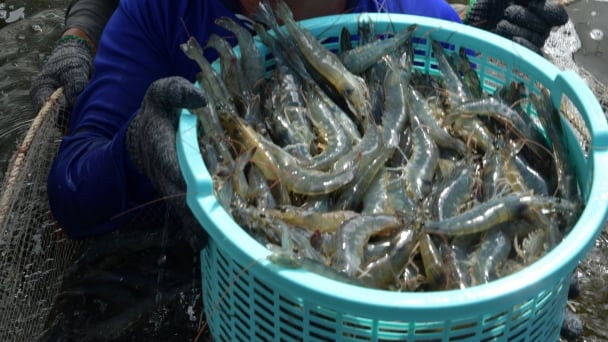
(VAN) Deputy Minister Phung Duc Tien has directed the fishery sector to diversify its farming objectives during the conference reviewing Q1 performance and outlining tasks for April and Q2/2025.
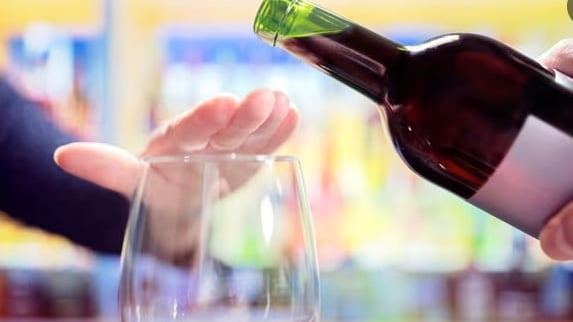
(VAN) Consumption and production falls in almost every market as industry fears a ‘generational’ change in drinking habits.